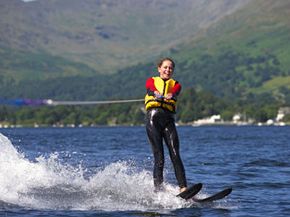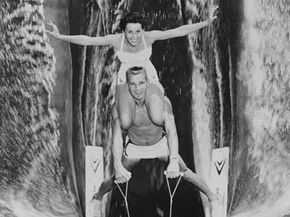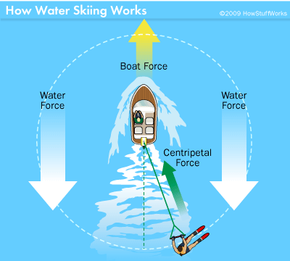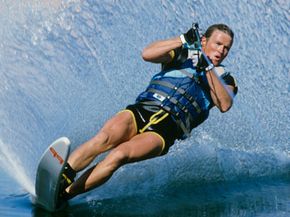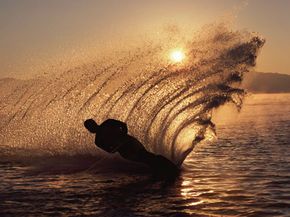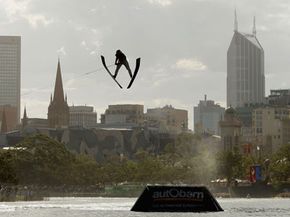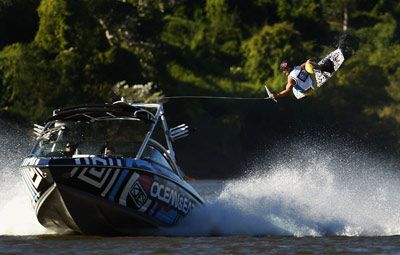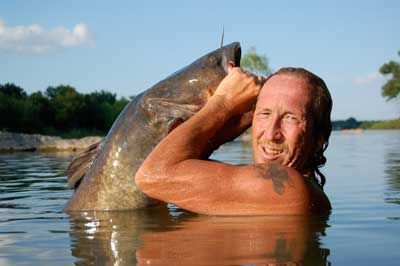It's not exactly walking on water. But it's close -- and you might even say it's better. Gliding across the surface of a lake at 20 miles per hour (32 kilometers per hour) with the wind in your hair is definitely a unique feeling. And you can thank water skis for giving it to you.
Waterskiing is pretty simple. A person, wearing what looks like snow skis, is pulled behind a motorboat across the water. The water sport has about a century's worth of history. Its development has paralleled the development of motorized water crafts. You can't waterski behind a canoe; you must be pulled by a motorboat going at least 20 miles per hour. So, technological advancements in motor crafts have only contributed to waterskiing's evolution. The faster the boat, the faster the skier. And speed also translates to new tricks and maneuverability.
Advertisement
Aside from being a popular recreational sport enjoyed by thousands, waterskiing is also an ever-growing competitive sport. USA Water Ski guides over 900 tournaments, ranging from small events for beginners to world-level competitions each season. Skiers of all ages can compete in slalom, tricks and jumping tournaments. The International Water Ski Federation hosts several world-level competitions each year, including categories for the elite, veteran, under 21, junior and disabled water ski championships.
But before we get to the expert skiers, we need to start at the beginning. Who invented the sport? And how can you stand up on those skis?
Advertisement
